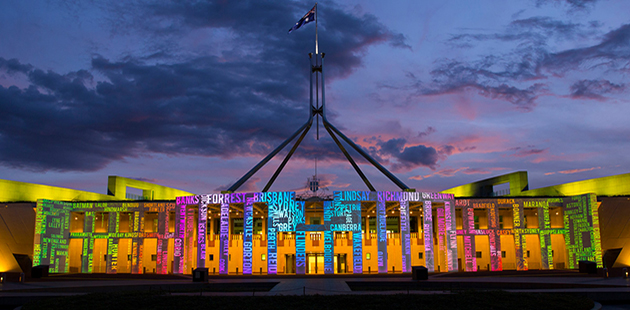 It says something about the place of the arts in Australian public life that a federal budget speech delivered on the eve of an election chooses not to mention them. Agriculture gets a mention. Culture, however, doesn’t.
It says something about the place of the arts in Australian public life that a federal budget speech delivered on the eve of an election chooses not to mention them. Agriculture gets a mention. Culture, however, doesn’t.
If The Honourable Josh Frydenberg MP really meant what he declared towards the end of his budget speech, to wit that “a strong economy is not an end in itself. It’s what you do with it that counts”, then this was a missed opportunity.
In some respects maybe this was no bad thing. After all, as Conor King, Executive Director of Innovative Research Universities noted in relation to higher education, one good result of “the quietest budget for some years” was the announcement of no new cuts.
But it also suggests that the government is unwilling to offer strong leadership in this particular sphere of public policy. Battle weary, perhaps, by years of engagement in the so-called “culture wars”, and still reeling from the criticism it faced across the sector after the punitive measures it announced in 2014, maybe the government decided that the arts is an area best left alone at this end of the electoral cycle.
To be sure, however, there are some new initiatives to be found in this year’s budget if one cares to look. The most controversial is perhaps the $800,000 earmarked for Australia Day activities and to support a review of the National Australia Day Council’s programs.
A more substantial (in every sense) measure is the reconfirmation of a grant of $17.1 million to enable Free TV Australia to offer Australian television content to broadcasters in the south Pacific. This is a welcome recognition of the value of so-called “soft power” in the region notwithstanding the possibility, as the ABC has already wryly noted, of Married at First Sight being at the forefront of Australian cultural diplomacy.
Other new initiatives include $129 million to support cultural infrastructure in Adelaide, $85 million of this for a new Aboriginal Art and Cultures Gallery for the city. There is a partial rolling back of the savage cuts to the ABC announced in the 2017 budget, with an additional $43.7 million over three years available to support local and regional news and current affairs offerings. SBS also gets an extra $29.6 million to support its own TV, radio and online offerings.
The Prime Minister Scott Morrison had also a few days earlier announced $30.9 million to support Australia’s live music industry. Dubbed the Australian Music Industry Package, it included the provision of $22.5 million over four years for grants of $10,000 to small businesses to enable them to book musicians or to help them invest in equipment or infrastructure in order to establish or upgrade a live music venue. Other related initiatives include $2.1 million for a women in music mentor program and $2.7 million to establish a national development program for Indigenous musicians and bands.
While these no doubt reflect the government’s concern to appeal to inner-city, regional and ethnic minority voters in advance of the expected May election, they also reflect the current placement of the arts portfolio within The Department of Communications and the Arts.
The department’s stated mission is to work “with government and industry to provide an environment in which all Australians can access and benefit from communications services, creative experiences and culture.” It summarises its strategic direction under two broad aims:
• connectivity: enabling all Australians to connect to effective communications services and technologies, for inclusiveness and sustainable economic growth
• creativity and culture: supporting inclusiveness and growth in Australia’s creative sector, and protecting and promoting Australian content and culture.
Arts minister Mitch Fifield thus justifies such budget allocations ultimately because, “The Morrison government understands the enormous potential for growth in this dynamic sector and is delivering real world measures to strengthen the diversity and reach of our music industry.”
In contrast to what Treasurer Josh Frydenberg said, then, it seems the budget is ultimately all about the economy. Where is the nation-building cultural vision, the statement of cultural aspiration? Where is any recognition that the arts are one of the ways we ultimately make sense of our place in an increasingly confusing, and confused, world?
Is it too much to expect our governments, of whatever political persuasion, to want to support not just an arts economy but also the arts as a good in themselves? Is it too much to expect them to help encourage and empower the wider Australian community to explore just what sorts of art and artistic practice can best befit our nation in the 21st century?
Missing in action: a vision for the arts in the 2019 budget
Peter Tregear, Honorary Principal Fellow, University of Melbourne
This article is republished from The Conversation under a Creative Commons license. Read the original article.
Image: Parliament House, Canberra
![]()
